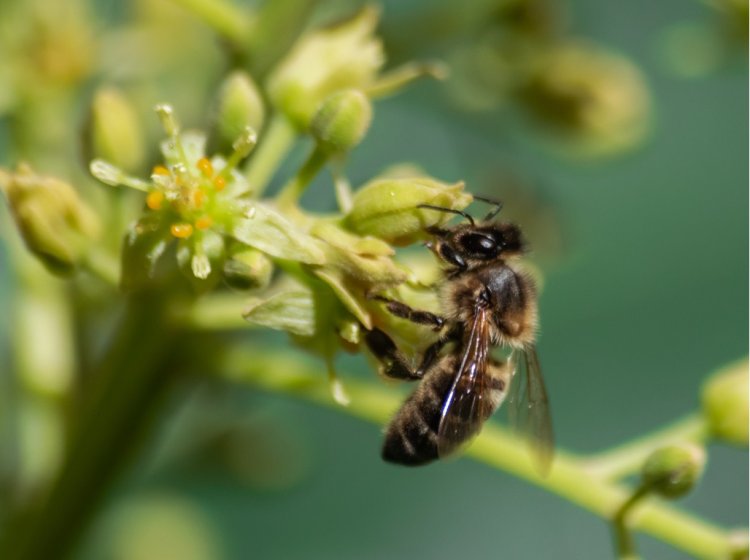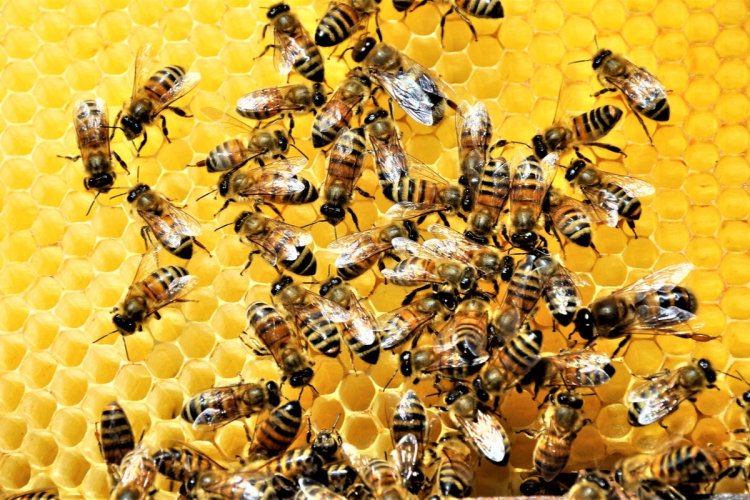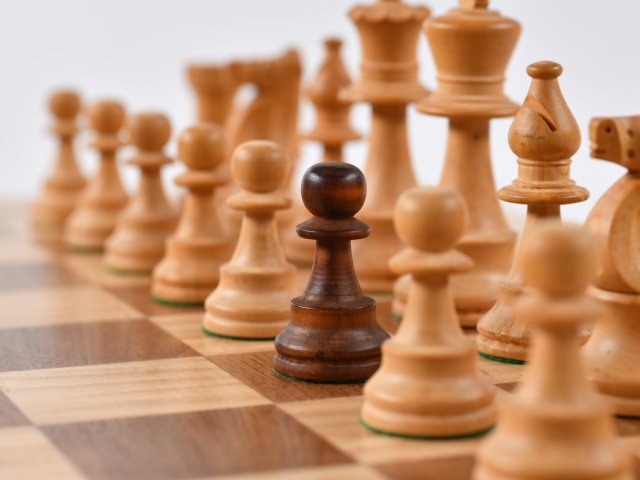In beekeeping and ethology, there is the term “bee dance,” which can be taken literally. For humans, the chaotic movements of insects are incomprehensible, but for bees it is a way of communication, a language that informs about nectar, pollen, danger, and anxiety, expressing joy or the need to warm up.
The study of the ritual dances of bees began in 1688, when John Evelyn, the gardener of Charles II, noticed the unusual behavior of bees. In his diary, he wrote: “It seems like bees are talking to each other with different dance moves.” But a more detailed study was done by the Austrian zoologist Karl von Frisch, who specialized in individual and group animal behavior. He found out that bees have their own perception of color, smell, and taste, studied their way of orientation by the sun, and deciphered the bee dance language through which they inform each other about the location of food.
During the dance, powerful wing muscles contract and the body vibrates, while the wings are folded. These signals reach the cells within one hive, which allows other bees to perceive information.
Scientists experimented to confirm this mechanism. They created a small robot that reproduced the dance movements of bees. And the experiment was a success: at the signal, the bees flew to the place that the robot signaled.
A. S. Pushkin wrote:
As though from some miraculous, waxy kingdom,
The first bee has flown out
Of its fragrant honeyed cell,
Flying among the early flowers
To explore the red spring a bit.
After finding out where the source of nectar or pollen is located, the scout bees transmit information to the foraging bees. If the wagging movements are directed upwards, then it is necessary to fly towards the sun; if the movements are in a straight line – away from the sun, and if the bee makes deviations to the right or left side, then this indicates the necessary correction during the flight.
There are several types of dances, and each has its functions.
Round Dance
Such a dance begins after the delivery of the collected nectar and lasts for several seconds. The bee throws from side to side, rotates, and moves in a circle. This signal indicates that the food source is 45 meters away from the hive. But the bee does not indicate the direction, because after attracting attention, the rest of the bees themselves will follow it. To understand where they need to go, the fragrance of flowers that a bee brings on its abdomen will help. With the help of antennae, insects catch the smell and fly towards the nectar.
Waggle Dance
Frisch found that the waggle dance is more informative and transmits information about nectar within a radius of more than 100 meters from the hive. The bee makes a semicircle in one direction, then in the other and spreads the scent of flowers, prompting other bees to act. The intensity of abdomen wagging depends on the distance. The farther away from the honey plant (a plant where the bees can get nectar), the fewer movements and circles the bee makes. For example, if the distance is 100 m, then the insect will make about 10 circles in 15 seconds, and 6 km is exactly 8 wiggles per second. Bees are very receptive and observe even the angle between the vertical axis and the dance line. Usually, the deviation from it is no more than 15 degrees.
This dance has its peculiarity among Italian bees. If the distance to the food source is not more than 100 m, together with the wagging movements they form an eight.
Shake Dance
This dance is performed by bees in the evening on the front wall of the house. Swaying, they bend down, scratch the surface with their legs and jaws, feel the walls with their antennae. They scrape off the collected sticky mass. This is how bees clean the hive from dirt. Young bees are engaged in this work at any time of the year.
Alarm Dance
With the help of this ritual dance, bees warn of danger. Swiss naturalist Schneider investigated how bees react to sugar syrup poisoned with dinitro-ortho-cresol. The insects noticed the threat in the composition and got excited. They attracted attention with zigzags, spirals and shook their abdomens. After 2 hours, most of the bees in the dwelling felt the danger and performed the alarm dance. And if the insects felt that someone was infected with toxins, they began to protect the hive and destroy the poisoned bees.
Cleaning Dance
This dance is associated with cleaning the body from wax, pollen, and other contaminants. The bee moves its legs while rhythmically swinging in different directions. Other bees also take part in this process. Independently, a bee can only clean the base of the wings, and with the chest and abdomen, the help of others is needed. As in the case of cleaning the house, the bee scrapes off dirt with the help of jaws and antennae. Cleaning one bee takes about a minute.
Source: wirestock / Freepik photobank
Joy Dance
Good weather or the birth of an infertile queen is accompanied by a joyful waltz. The bee rests its paws on another bee and swings left, right, forward, and backward. After completing the dance with one neighbor, the bee goes to the other.
Massage Dance
This dance is often observed during cold weather, so scientists assume that this is how bees try to keep warm. After making a tilt of the head, the bee opens its upper jaw and sticks out its proboscis, like a nurse bee, calling others. Insects begin to move their paws and antennae, examine the abdomen of a neighbor. In response to this, the bee that started the dance cleans the proboscis and moves away, continuing to stroke itself with its front paws.
Photo on the homepage: pikisuperstar / Freepik photobank
Photos on the page: martinleber / 123RF photobank, wirestock / Freepik photobank.























